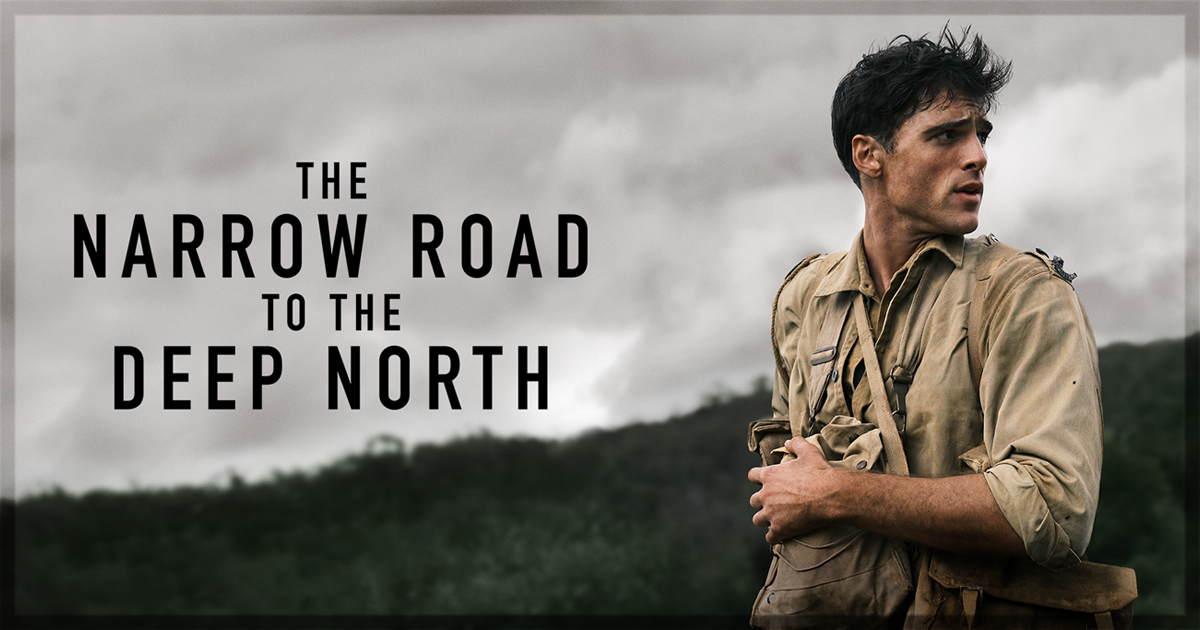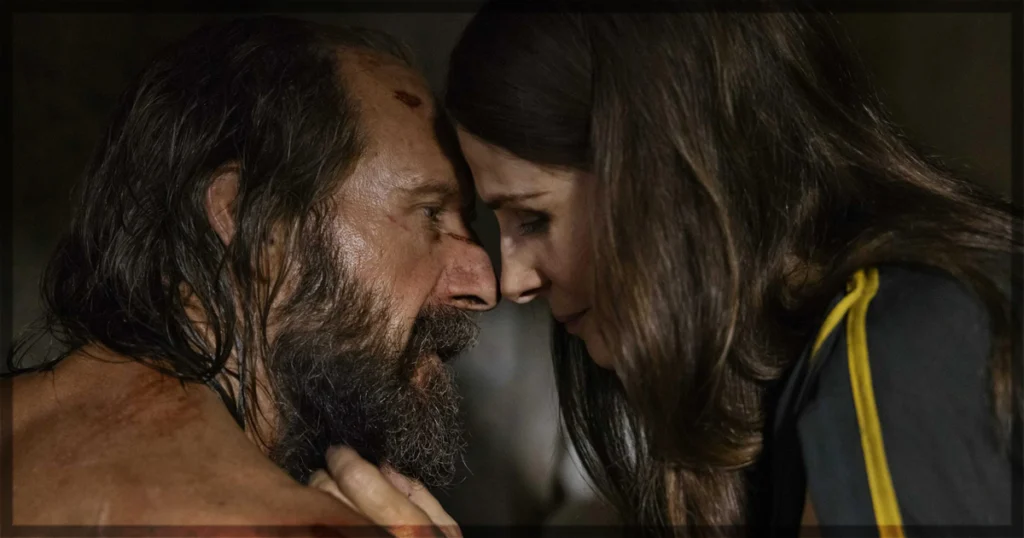Australian auteur Justin Kurzel adapts Richard Flanagan’s novel to harrowing effect in The Narrow Road to the Deep North. The adaptation blends a harrowing tale of a Japanese prisoner-of-war camp with a war-bound love story and a modern tale of surviving the trauma.
The series doesn’t wait to set up the horrors of the era. In the opening scene, set in Syria in 1941, audiences meet a group of Australian soldiers whose banter soon ends when an explosion takes out one of their own and a Syrian child. It’s an unflinchingly uncomfortable scene that sets up the tone for the entire series. Life changes quickly in war.
The Narrow Road to the Deep North takes place over three time periods in the life of Australian medic Dorrigo Evans (Priscilla’s Jacob Elordi and in later years Belfast’s Ciarán Hinds). It follows Dorrigo as he joins Australia’s Armed Forces in the 1940s, his experience in 1943 as a prison of war in Thailand forced by the Japanese to build Burma’s “death railway” and life in 1989 as an affluent surgeon in Sydney. The show’s key theme is that you can never forget the horrors or help those who didn’t experience it fully understand it.
Unlike other war-centric narratives, this five-part series doesn’t spend much time on the battlefield or concern itself with the larger concepts of WWII. Instead, it depicts his life before, his life as a prisoner of war, and his life afterward as a Sydney-based surgeon.
Less Gunfire, More Romance
This series isn’t bothered by the standard gunfire and action sequences associated with war media. Instead, it focuses on Dorrigo’s complicated romantic entanglements and the wounds that stay with him long after he leaves the POW camps. In the grand scheme of World War II, it’s important to remember that every soldier was a man with a family, a complicated love life, and personal failures.
Before going to war, he is engaged to a woman from a well-to-do family, Ella (Olivia DeJonge), but also engaged in a sexual relationship with Amy (Odessa Young), who is married to his uncle (Simon Baker). It says something about the tone of the show, that these scenes feel like light relief.
There are sex scenes, lots of sex scenes, perhaps too many. They border on gratuitous by the fourth episode, thanks to the actor’s sizzling chemistry. Instead of exploring the nuances of Dorrigo’s love life and treatment of women, The Narrow Road to the Deep is more interesting in showing his steamy love affair in its skin-on-skin glory. By the end, Dorrigo’s romantic entanglements roam the soap opera territory but are just saved by delicate performances by Olivia DeJonge and Odessa Young.
Never Shies Away From The Horrors Of War
That is not to say The Narrow Road to the Deep North isn’t incredibly difficult to watch. The show never fails to shy away from the horrors of the prison of war camps and life as a war medic. On all timelines, the camera loves to zoom in on amputated limbs and open wounds. It’s not a show for the faint-hearted. The barbaric conditions of the POW are recreated in stomach-churning detail, but it’s all necessary to depict the horrors of Dorrigo’s youth. You need these scenes to understand why 1980s Dorrigo is the way he is.
It’s not all bleak. The Narrow Road to the Deep North also depicts the light-hearted camaraderie between the men in Thailand. They can find joy and laughter, even in the worst conditions a human can imagine. This makes their famished pain even harder to stomach, by the end unable to hold their head high and joke about the situation.
When it comes to their Japanese captors, the show doesn’t turn them into one-dimension villains. They are real people with their own internal conflicts and concerns about the role they have taken on. The Narrow Road to the Deep North doesn’t shy away from the utter cruelty of the captor’s violence. It’s utterly chilling to see the euphoria of someone beheading a young man.
After the war, there is a fire to older Dorrigo that the younger seems absent of. He is an arrogant surgeon who can’t handle the new sympathy for the Japanese survivors. Despite his new brittle personality, he still has a taste for the ladies, having an affair with his colleague’s wife (Essie Davis). 77-year-old Dorrigo is a more interesting and layered character, helped by Hinds’ more nuanced performance.
Kurzel’s camera films the horror unfolding tightly, holding focus for an uncomfortably long time. Many of the past scenes are hard to see and hard to hear, physically. Many of the visuals are drained of colour, filmed in a murky almost gray scale, only adding to the horrors. The 1980s timeline is brighter but in a sterile way. Kurzel uses every sense possible to add dread to the narrative.
Two Very Different Men
Sometimes, The Narrow Road to the Deep North struggles to connect the two men and the three timelines. This is more due to the writing than the acting. The series flits wildly between three timelines, often switching jarringly in tone. Graphic sex scenes are paired with violence, and moments of introspection as a POW come sandwiched between lighter scenes of soldier banter. The Narrow Road to the Deep North doesn’t always balance these tones well.
Hind’s older Dorrigo is captivating as a man who wears his haunting past in every moment yet still appears as an authority. Elordi is more sensitive as his younger counterpart, even if some of the heavier moments feel a little too much for his acting skills. During some of the tense moments, Elordi’s acting can feel stilted and unnatural.
The Narrow Road to the Deep North is a tough watch and not one you will likely want to binge. But it’s necessary in its cruelness, never holding back the terrors of war and the scars those involved will always bear.
The Narrow Road to the Deep North premiered on April 18th on Prime Video.
Learn more about the series, including how to watch, at the site for the title.
You might also like…
‘The Return’ Review: An Unusually Subtle and Thoughtful War Movie


